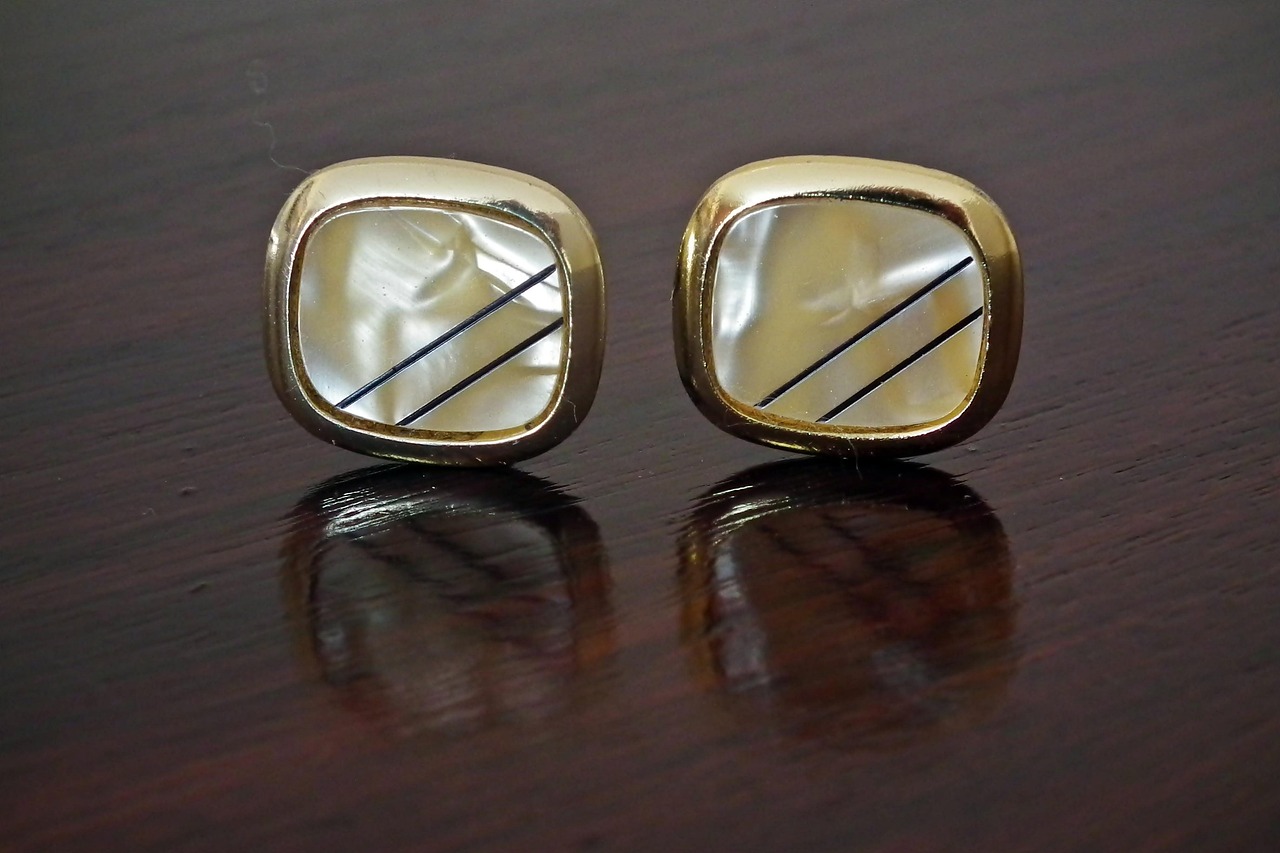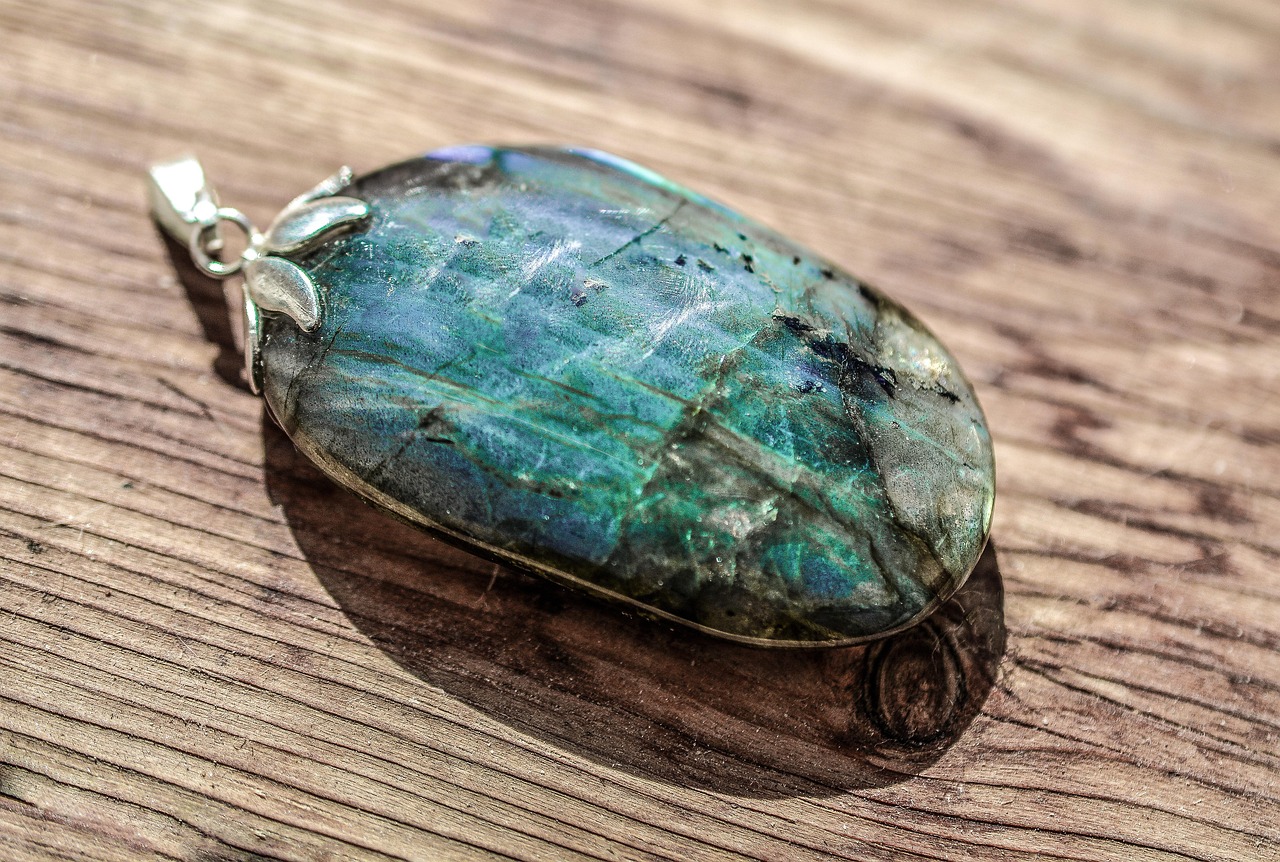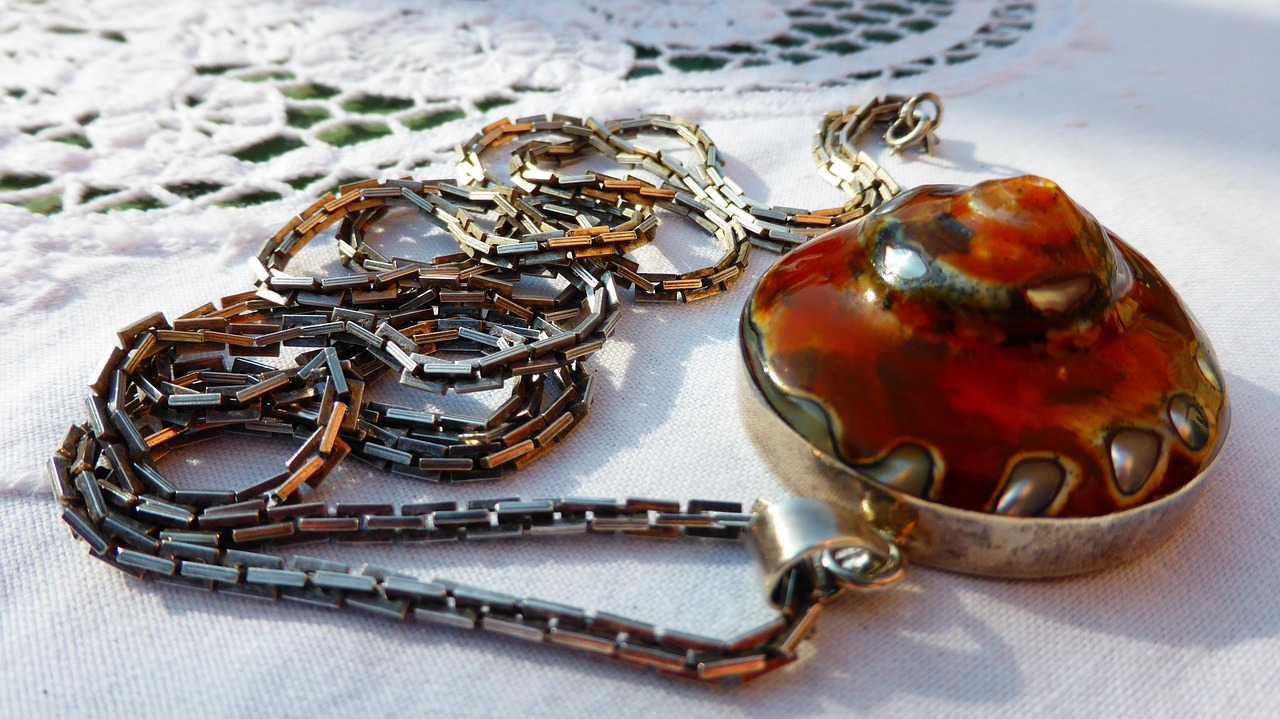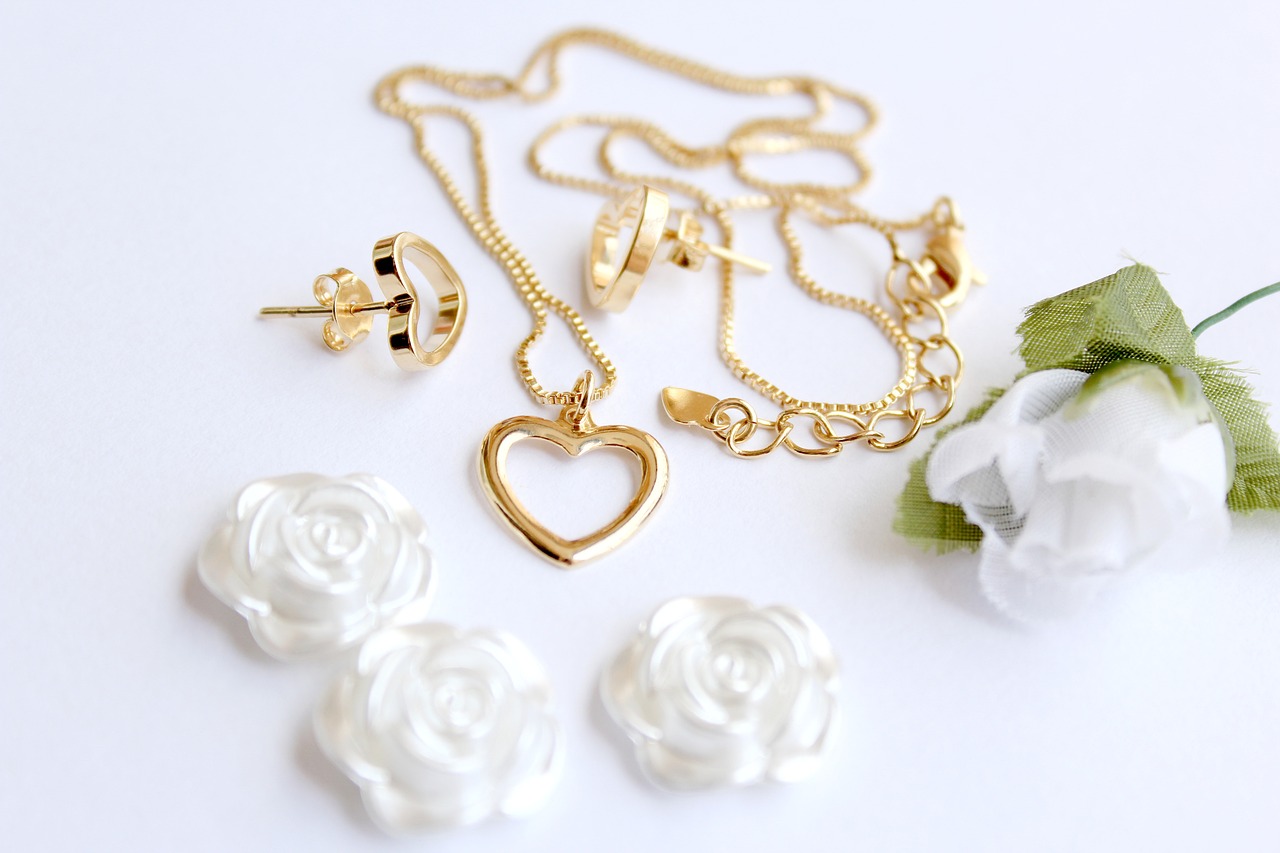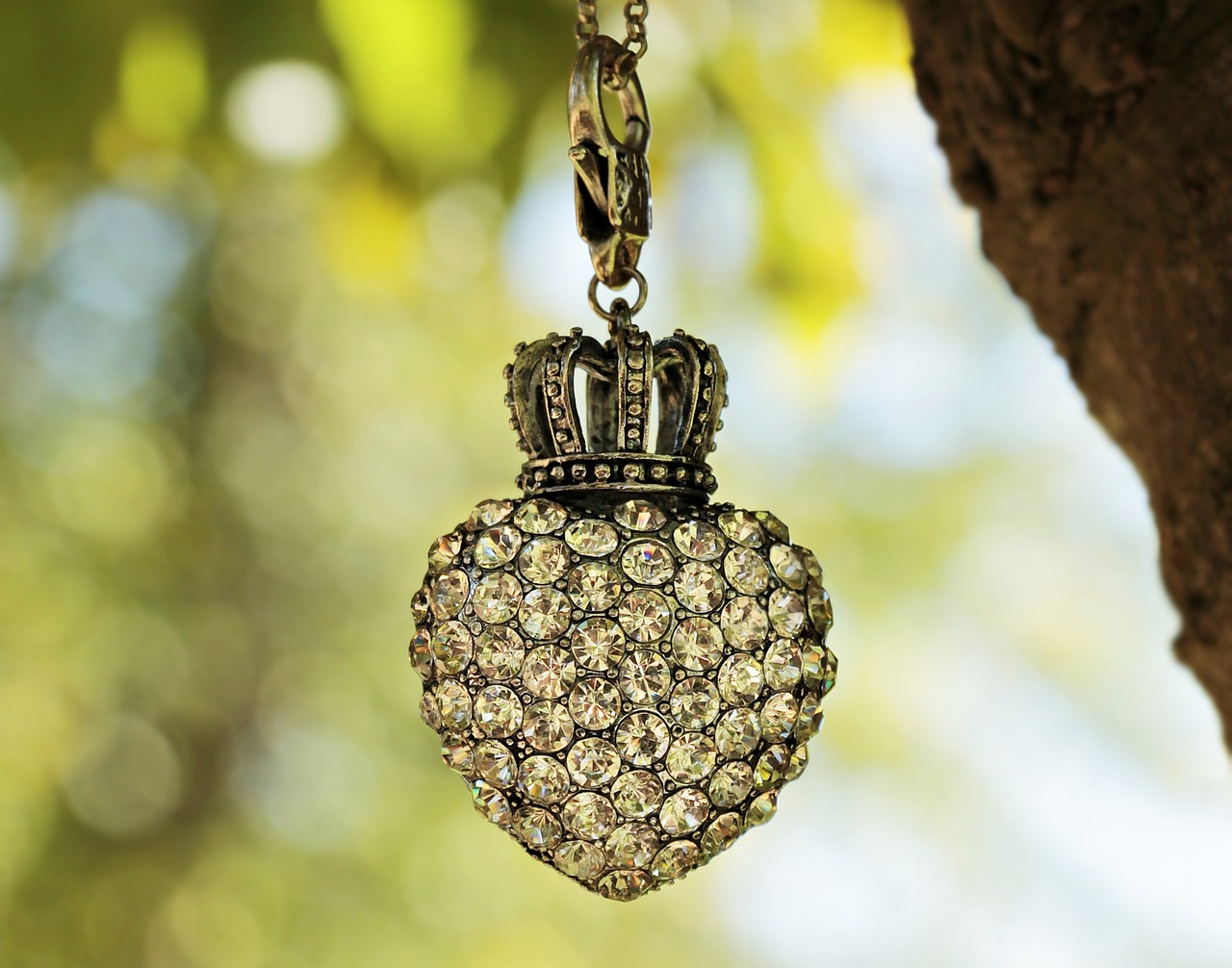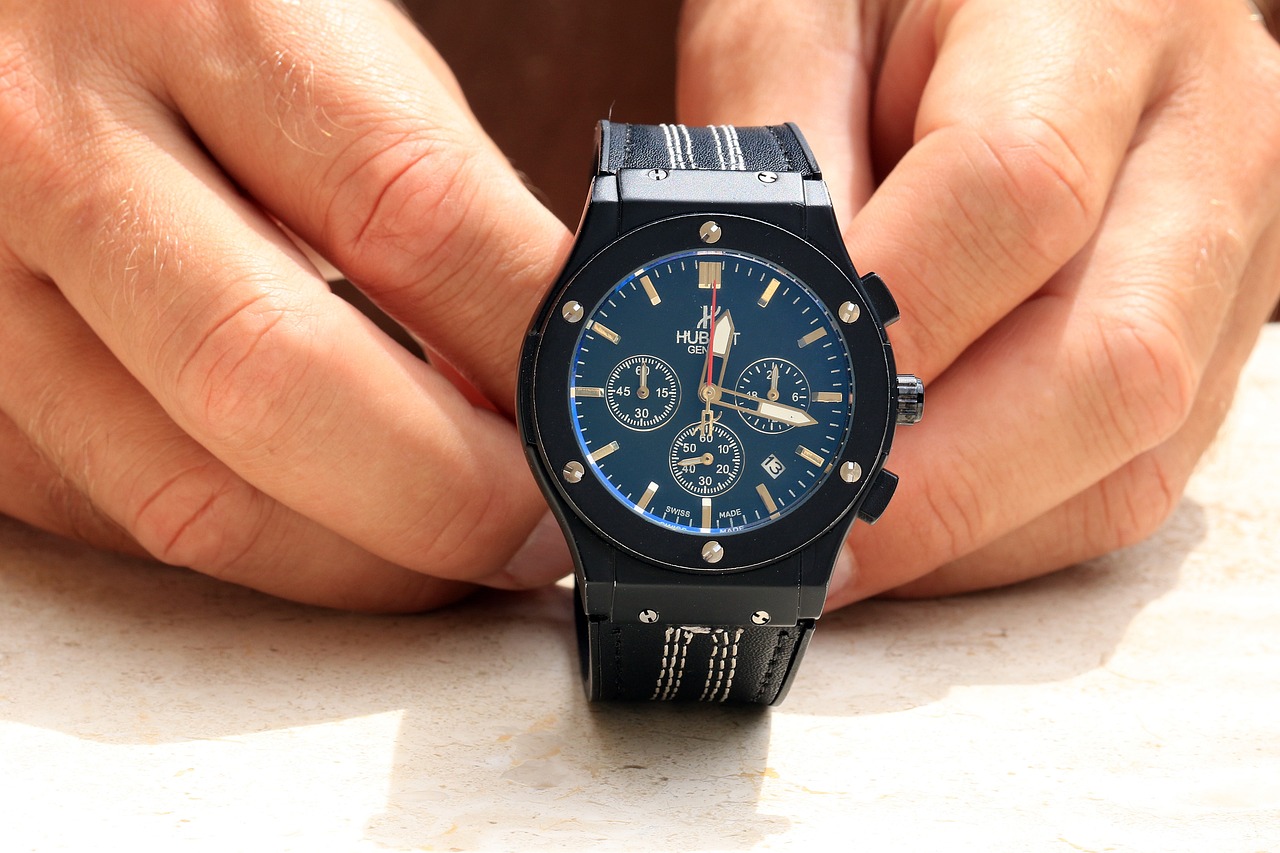This article explores how 3D printing technology is revolutionizing the jewelry industry, enabling unprecedented levels of personalization and creativity for consumers and designers alike. With the advent of this innovative technology, traditional jewelry-making processes are being transformed, allowing for unique designs that cater to individual tastes.
What is 3D Printing in Jewelry?
3D printing in jewelry involves the use of computer-aided design (CAD) software and additive manufacturing techniques to create intricate and customizable pieces. This method allows jewelers to produce complex designs that were previously impossible to achieve with traditional techniques.
How Does 3D Printing Transform Jewelry Design?
The transformation of jewelry design through 3D printing allows designers to experiment with complex geometries and materials, enhancing creativity while significantly reducing production time. This technology empowers designers to push the boundaries of their creativity.
- Benefits of 3D Printing for Designers: Designers can quickly create prototypes, leading to faster iterations and innovative designs.
- Cost-Effectiveness in Prototyping: By reducing costs associated with traditional jewelry-making methods, designers can produce prototypes without high expenses.
- Enhanced Creativity and Innovation: 3D printing enables designers to explore unconventional shapes, fostering a new wave of creativity.
Benefits of 3D Printing for Consumers:
Consumers are now able to enjoy a more personalized shopping experience. With the ability to customize designs, they can reflect their individual styles and preferences, making each piece of jewelry unique.
What Materials are Used in 3D Printed Jewelry?
A variety of materials can be utilized in 3D printed jewelry, including metals, plastics, and resin. Each material offers unique properties and finishes suitable for different design needs.
- Common Materials in 3D Jewelry Printing: Popular materials like sterling silver, gold, and nylon cater to diverse aesthetics.
- Innovative Materials on the Horizon: Emerging materials such as bio-resins and recycled metals are gaining traction, promoting sustainability.
How is 3D Printing Changing Consumer Expectations?
3D printing is reshaping consumer expectations by providing faster turnaround times, greater customization options, and a more engaging shopping experience through interactive design tools.
- Personalization in the Jewelry Market: Consumers increasingly seek personalized products that reflect their individuality.
- Impact on Retail Experiences: Retailers are adapting by offering immersive experiences, enhancing customer engagement.
What Challenges Does 3D Printing Face in Jewelry Production?
Despite its advantages, 3D printing in jewelry faces challenges such as production speed, material limitations, and the need for skilled operators to manage complex designs effectively.
- Production Speed and Scalability Issues: While 3D printing allows for rapid prototyping, scaling production to meet demand remains a challenge.
- Quality Control and Material Limitations: Ensuring consistent quality across materials requires careful management of the printing process.
What Does the Future Hold for 3D Printed Jewelry?
The future of 3D printed jewelry looks promising, with advancements in technology, materials, and design software paving the way for more innovation and personalization in the industry.
- Integration of AI and Machine Learning: AI is expected to optimize design processes, predicting trends and enhancing customer experiences.
- Sustainability and Ethical Practices: 3D printing offers opportunities for ethical sourcing and reduced waste, aligning with consumer values.
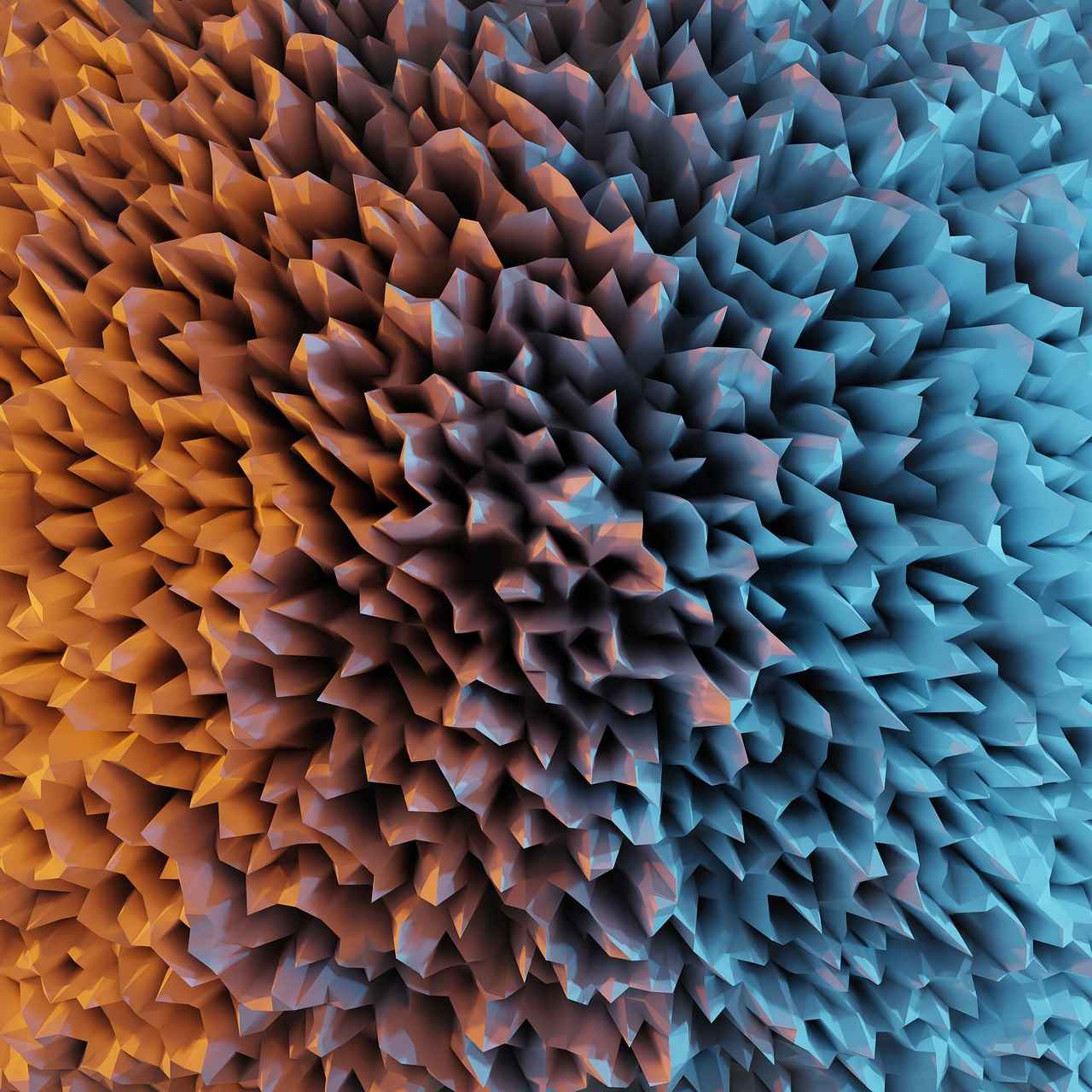
What is 3D Printing in Jewelry?
3D printing in jewelry is a groundbreaking technology that is transforming the way jewelry is designed and manufactured. By utilizing computer-aided design (CAD) software and additive manufacturing techniques, this innovative method allows for the creation of intricate and unique jewelry pieces that were previously unimaginable. The ability to produce customizable designs not only enhances the creativity of designers but also offers consumers a personalized experience like never before.
At its core, 3D printing in jewelry refers to the process of building three-dimensional objects layer by layer from a digital file. This process begins with the designer creating a detailed model using CAD software. Once the design is finalized, the 3D printer uses various materials—such as metals, plastics, or resin—to bring the design to life. This method of production allows for the creation of intricate details and complex shapes that traditional jewelry-making methods struggle to achieve.
One of the most significant advantages of 3D printing is the ability it provides designers to explore complex geometries and innovative designs. Unlike traditional methods, which often require extensive manual labor and time, 3D printing enables rapid prototyping. Designers can quickly test their ideas, make adjustments, and produce multiple iterations of a piece without the prohibitive costs associated with traditional manufacturing. This flexibility encourages experimentation and fosters a culture of innovation within the jewelry industry.
- Rapid Prototyping: Designers can create and modify prototypes quickly, allowing for faster development cycles.
- Cost-Effective Production: The reduction in material waste and labor costs enables designers to produce high-quality pieces without breaking the bank.
- Complex Designs: 3D printing allows for the creation of intricate patterns and structures that are often impossible with traditional techniques.
For consumers, the advent of 3D printing means a more personalized shopping experience. Customers can now customize their jewelry to reflect their individual styles and preferences. Whether it’s a unique engagement ring or a personalized necklace, 3D printing allows consumers to play a significant role in the design process.
A wide variety of materials can be utilized in 3D printed jewelry, including:
- Metals: Common choices include sterling silver, gold, and titanium, each providing distinct aesthetic qualities.
- Plastics: Durable and versatile, plastics can be used for both prototypes and final products.
- Resins: Often used for detailed designs, resins can offer a high level of detail and finish.
Despite its many advantages, 3D printing in jewelry is not without challenges. Issues such as production speed and material limitations can hinder the scalability of this technology. While rapid prototyping is a significant benefit, meeting high demand for mass production can be problematic. Additionally, ensuring consistent quality across different materials requires skilled operators and meticulous quality control processes.
The future of 3D printed jewelry is bright, with continuous advancements in technology and materials paving the way for further innovation. As the demand for personalized and sustainable products grows, 3D printing will likely play a pivotal role in meeting these consumer expectations. With the integration of AI and machine learning, the design process is expected to become even more efficient, allowing for the creation of bespoke pieces that cater to individual tastes.
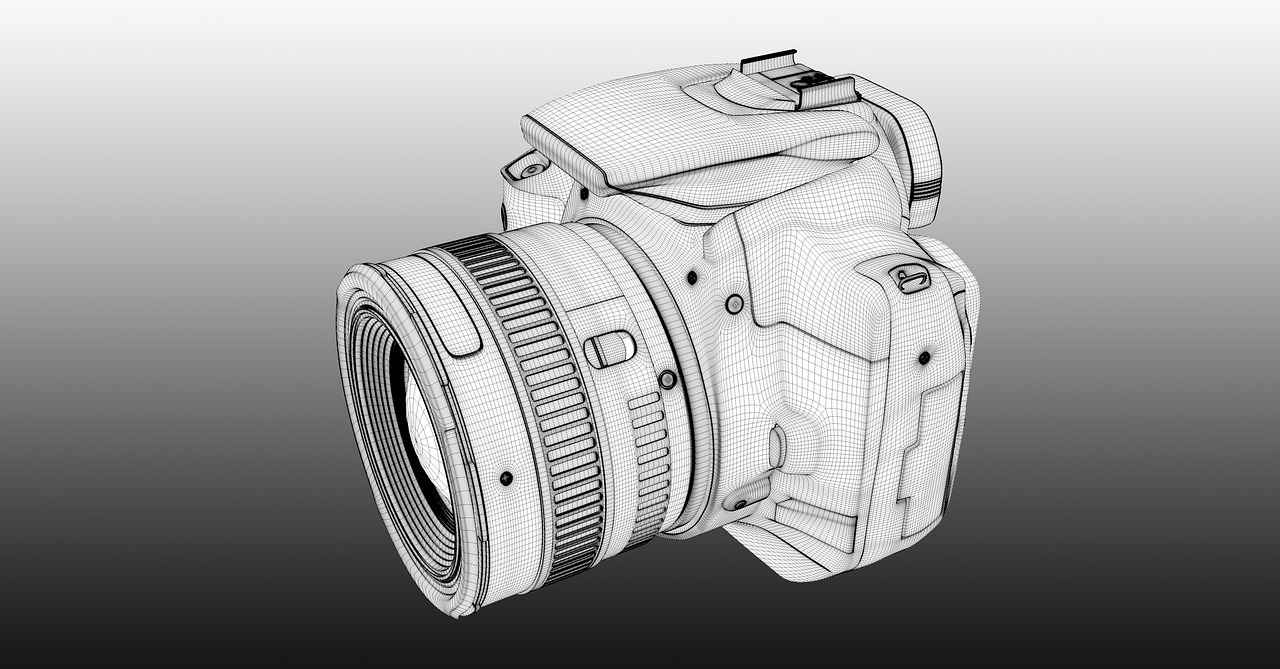
How Does 3D Printing Transform Jewelry Design?
The evolution of jewelry design has reached new heights with the advent of 3D printing technology. This innovative approach enables designers to break free from traditional constraints, allowing for the creation of intricate and personalized pieces that were previously unimaginable. In this section, we will delve into the transformative effects of 3D printing on jewelry design, highlighting its benefits and implications for both designers and consumers.
The integration of 3D printing into jewelry design has ushered in a new era of creativity. Designers can now explore complex geometries and experiment with a wide range of materials, enhancing their artistic expression and redefining the possibilities of jewelry making.
- Complex Geometries: Traditional jewelry-making techniques often limit the complexity of designs due to the constraints of manual craftsmanship. However, with 3D printing, designers can create intricate patterns, lattice structures, and organic forms that would be nearly impossible to achieve by hand.
- Material Versatility: 3D printing allows for the use of various materials, including metals, plastics, and even bio-resins. This versatility not only enhances the aesthetic appeal of jewelry but also enables the incorporation of unique textures and finishes.
- Rapid Prototyping: The speed at which designers can produce prototypes has dramatically increased. This rapid prototyping capability enables quicker iterations, allowing designers to refine their concepts and bring innovative designs to market faster.
Moreover, the ability to create customized jewelry is a game changer for consumers. With 3D printing, individuals can personalize their pieces according to their tastes, preferences, and even emotional significance. This level of customization fosters a deeper connection between the wearer and the jewelry, making each piece a unique representation of personal style.
The benefits of 3D printing extend beyond just design capabilities. For designers, the technology significantly reduces costs associated with traditional methods. The elimination of expensive molds and tooling means that designers can experiment without the financial risk that usually accompanies new product development.
| Benefits for Designers | Benefits for Consumers |
|---|---|
| Cost-effective prototyping | Personalized designs |
| Faster design iterations | Unique pieces reflecting individual styles |
| Exploration of new materials | Engaging shopping experience |
For consumers, the interactive nature of 3D printing enhances the shopping experience. Many retailers are adopting virtual try-on technologies, allowing customers to visualize how a piece will look before making a purchase. This engagement not only increases customer satisfaction but also builds loyalty as consumers feel more connected to their choices.
In conclusion, the transformation of jewelry design through 3D printing is a testament to the power of technology in creative industries. By enabling designers to push the boundaries of their craft and providing consumers with personalized options, 3D printing is reshaping the landscape of jewelry in profound ways. As the technology continues to evolve, we can expect even more exciting developments in the realm of jewelry design.
Benefits of 3D Printing for Designers
In the realm of jewelry design, 3D printing has emerged as a transformative force, offering designers unparalleled advantages. The ability to create prototypes quickly and affordably has revolutionized the design process, allowing for rapid iterations that lead to innovative designs. This technology not only enhances creativity but also streamlines workflows, enabling designers to bring their visions to life with remarkable efficiency.
Rapid prototyping is a game changer in the jewelry industry. Traditionally, designers faced long wait times and high costs when developing new pieces. With 3D printing, they can produce prototypes in a fraction of the time and at a significantly lower cost. This cost-effectiveness allows designers to experiment with various designs without the fear of financial loss, fostering a culture of innovation.
- Faster Iterations: Designers can quickly modify their designs based on feedback, leading to a more refined final product.
- Increased Experimentation: The low cost of materials encourages designers to explore unconventional shapes and styles.
- Accessibility: Smaller design studios can now compete with larger firms, leveling the playing field.
The freedom to create intricate and complex designs is one of the most significant benefits of 3D printing. Traditional jewelry-making techniques often limit the shapes and structures that can be achieved. However, with 3D printing, designers can push the boundaries of their creativity, allowing for the exploration of new aesthetics and functions.
Examples of Creative Possibilities:- Intricate lattice designs- Customizable elements that can be added or removed- Unique textures and finishes that were previously unachievable
3D printing opens up a world of material possibilities. Designers can utilize a variety of materials, including metals, plastics, and even bio-resins, which offer unique properties that cater to different design needs. This versatility enables designers to create pieces that are not only visually stunning but also functional and sustainable.
- Metal Options: Designers can work with precious metals like gold and silver, as well as innovative materials like titanium.
- Sustainable Choices: The rise of recycled materials aligns with consumer demand for environmentally friendly practices.
While the advantages are significant, designers must also navigate certain challenges associated with 3D printing. Issues such as production speed, quality control, and the need for skilled operators can impact the overall design process.
- Production Speed: Although prototyping is fast, scaling up production for mass-market items remains a challenge.
- Quality Control: Ensuring consistent quality across different materials and designs requires meticulous attention to detail.
In conclusion, the integration of 3D printing into jewelry design represents a significant leap forward, offering designers the tools they need to innovate and create in ways that were once unimaginable. As technology continues to evolve, the potential for creativity and personalization in jewelry design will only expand, reshaping the industry for years to come.
Cost-Effectiveness in Prototyping
has emerged as a pivotal advantage of 3D printing technology in the jewelry industry. With traditional methods often involving significant material waste and labor costs, 3D printing offers a more efficient approach that is transforming how designers create and produce jewelry.
Traditionally, jewelry-making requires artisans to invest heavily in materials, tools, and time. The process often involves crafting molds, which can be both costly and time-consuming. However, with 3D printing, designers can utilize computer-aided design (CAD) software to create virtual prototypes that can be printed directly, significantly reducing both the time and financial investment required in the prototyping phase.
One of the most compelling benefits of 3D printing is the ability to produce prototypes with minimal material usage. This is achieved through an additive manufacturing process, where material is added layer by layer, allowing for intricate designs without the excess waste typical of subtractive manufacturing methods. As a result, designers can experiment with various shapes and styles without the fear of incurring high costs from failed prototypes.
| Traditional Methods | 3D Printing |
|---|---|
| High material waste | Minimal waste due to additive process |
| Time-consuming mold creation | Quick digital prototyping |
| Labor-intensive | Less labor required for production |
| High upfront costs | Lower initial investment |
This cost-effectiveness allows designers not only to create more prototypes but also to take risks with their designs. They can explore unconventional ideas without the burden of high costs, leading to a more diverse range of products available in the market. This flexibility encourages innovation, as designers can quickly iterate on their ideas based on consumer feedback and trends.
Moreover, the ability to produce custom pieces on demand means that designers can cater to specific customer requests without needing to maintain large inventories. This shift towards customization and personalization meets the growing consumer demand for unique jewelry items that reflect individual styles and preferences.
Additionally, the reduced production costs associated with 3D printing can lead to lower retail prices for consumers. As designers save on materials and labor, these savings can be passed on to the customer, making high-quality, custom jewelry more accessible than ever before. This democratization of jewelry design not only benefits consumers but also fosters a vibrant marketplace where creativity can flourish.
In conclusion, the cost-effectiveness of 3D printing in prototyping is reshaping the jewelry industry. By minimizing material waste, reducing labor costs, and enabling rapid prototyping, designers can innovate more freely and respond quickly to market demands. This not only enhances the creative process but also aligns with consumer desires for personalized and affordable jewelry options.
Enhanced Creativity and Innovation
In the realm of jewelry design, 3D printing has emerged as a groundbreaking technology, allowing designers to explore and create pieces that were once deemed impossible. This innovative process not only facilitates the crafting of intricate shapes and structures but also encourages a new wave of creativity that challenges traditional norms. As designers embrace this technology, they are finding ways to push the limits of what jewelry can be, resulting in stunning, one-of-a-kind creations.
3D printing enables designers to utilize computer-aided design (CAD) software to create complex models that can be printed layer by layer. This method allows for the production of highly detailed and intricate designs that would be nearly impossible to achieve through traditional methods. As a result, designers can experiment with unconventional shapes and materials, leading to innovative pieces that capture the imagination.
The ability to create unique geometries and forms is one of the most significant advantages of 3D printing in jewelry design. Designers can now explore a range of styles, from organic forms inspired by nature to geometric patterns that reflect modern aesthetics. This flexibility allows for a richer exploration of artistic expression, enabling designers to break free from the constraints of traditional manufacturing techniques.
- Rapid Prototyping: Designers can quickly produce prototypes, allowing for faster iterations and refinements of their ideas.
- Customization: The technology supports personalized designs, giving consumers the opportunity to have bespoke pieces that reflect their individual styles.
- Material Experimentation: 3D printing opens up possibilities for using diverse materials, including innovative composites and sustainable options.
While the benefits of 3D printing are substantial, designers must also navigate certain challenges. For instance, achieving the desired finish and quality can require additional post-processing steps. Additionally, the learning curve associated with mastering CAD software can be steep for some. However, the rewards often outweigh these challenges, as the potential for creativity and innovation is immense.
The jewelry market is witnessing a significant shift as more designers adopt 3D printing technologies. Retailers are beginning to offer customized options that allow consumers to participate in the design process actively. This trend not only enhances customer engagement but also aligns with the growing demand for personalized products in the market.
The future of 3D printed jewelry is bright, with continuous advancements in technology and materials. As designers become more adept at utilizing these tools, we can expect to see even more innovative and personalized designs emerge. Additionally, the integration of AI and machine learning may further enhance design capabilities, allowing for predictive modeling and trend analysis that can inform future collections.
In conclusion, 3D printing is revolutionizing the jewelry industry by enabling designers to unleash their creativity and produce unique, personalized pieces. As technology continues to evolve, the possibilities for innovation in jewelry design will only expand, paving the way for a new era of artistic expression.
Benefits of 3D Printing for Consumers
As the jewelry industry evolves, 3D printing technology is paving the way for a new era of consumer engagement. One of the most significant advantages of this innovation is the enhanced personalization it offers. Consumers are no longer limited to pre-designed pieces; instead, they can create jewelry that truly reflects their unique styles and preferences.
3D printing allows for the creation of intricate designs that are often impossible to achieve through traditional methods. With the aid of computer-aided design (CAD) software, consumers can customize every aspect of their jewelry, from the shape and size to the materials used. This level of customization empowers individuals to express their personalities through their accessories.
- Design Selection: Customers can choose from a variety of templates or create their own designs from scratch.
- Material Choices: Options range from precious metals like gold and silver to innovative materials such as bio-resins, allowing for diverse aesthetics.
- Engraving and Personalization: Adding names, dates, or personal messages makes each piece truly one-of-a-kind.
In today’s market, personalization is not just a trend; it’s a consumer expectation. Shoppers increasingly seek products that resonate with their identities and values. 3D printing meets this demand by providing a platform for bespoke designs tailored to individual tastes. This shift towards customization enhances the overall shopping experience, making it more engaging and meaningful.
Consumers benefit from a more interactive shopping experience through the use of virtual design tools. These tools allow customers to visualize their designs in real-time, making adjustments as needed. This level of involvement not only increases satisfaction but also fosters a deeper emotional connection to the product.
- Unique Expression: Customized pieces serve as a reflection of personal style, making them perfect for special occasions or everyday wear.
- Gift Options: Personalized jewelry makes for thoughtful gifts that show effort and consideration.
- Quality Assurance: With the ability to choose materials and designs, consumers can ensure that their jewelry meets their quality standards.
While the benefits of 3D printed jewelry are numerous, challenges remain. Consumers may face limitations in material availability or design complexity. Additionally, the learning curve associated with design software can be daunting for some. However, many retailers are addressing these challenges by offering user-friendly platforms and customer support.
The future of custom jewelry through 3D printing looks bright. As technology advances, we can expect even more options for personalization, including the integration of artificial intelligence to assist in design choices. This evolution will not only enhance consumer satisfaction but also drive innovation within the jewelry industry.
In summary, the rise of 3D printing technology is transforming the jewelry landscape, allowing consumers to enjoy a shopping experience that is more personalized than ever before. With the ability to customize designs to reflect individual styles and preferences, consumers are empowered to create pieces that are not only beautiful but also meaningful.
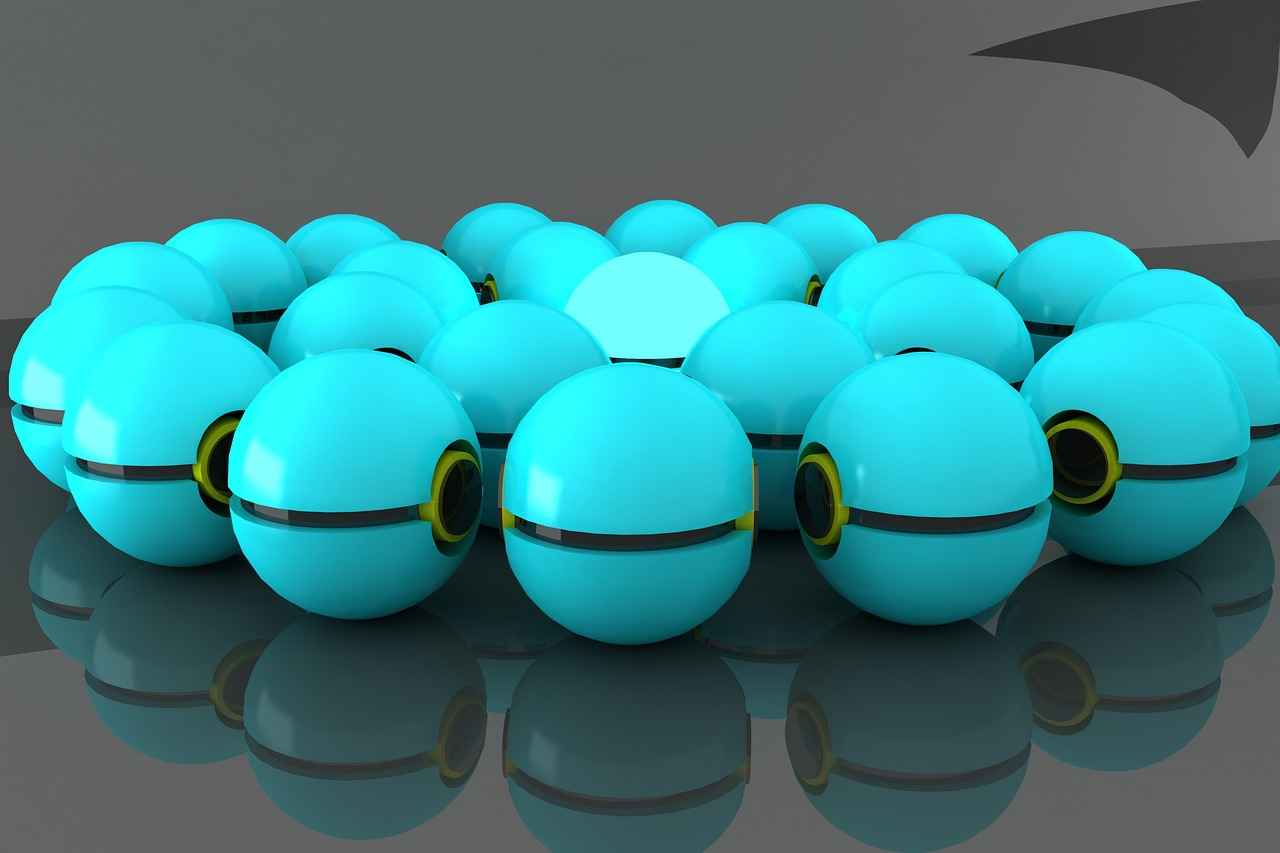
What Materials are Used in 3D Printed Jewelry?
3D printed jewelry is rapidly transforming the way we think about design and personalization in the jewelry industry. One of the most fascinating aspects of this innovation is the variety of materials available for creating unique pieces. Understanding the different materials used in 3D printing can help both designers and consumers appreciate the possibilities and limitations of this technology.
A diverse range of materials can be utilized in 3D printed jewelry, each offering distinct properties and finishes that cater to various design needs. These materials can significantly influence the final appearance, durability, and overall aesthetic of the jewelry.
Metals remain a popular choice for 3D printed jewelry due to their timeless appeal and durability. Commonly used metals include:
- Sterling Silver: Known for its bright finish and malleability, sterling silver is a favorite for creating intricate designs.
- Gold: Available in various karats and colors, gold adds a luxurious touch and is often used in high-end pieces.
- Stainless Steel: This material offers strength and resistance to tarnish, making it ideal for everyday wear.
Plastics, particularly nylon and acrylonitrile butadiene styrene (ABS), are gaining traction in the 3D printing world due to their affordability and versatility. These materials allow for:
- Color Variety: Plastics can be easily dyed, offering a wide range of colors and finishes.
- Lightweight Designs: Ideal for larger pieces, plastics reduce the overall weight without compromising on style.
Resin is another material that has become increasingly popular in 3D printed jewelry. It is particularly valued for its ability to capture fine details and provide smooth finishes. Key advantages include:
- High Precision: Resins allow for intricate designs that would be challenging to achieve with traditional methods.
- Customizable Properties: Different types of resins can be used to achieve various hardness levels and finishes, from glossy to matte.
As the technology continues to evolve, innovative materials are emerging, promising to enhance sustainability and creativity in jewelry design. Notable mentions include:
- Bio-resins: Made from renewable resources, these materials are environmentally friendly and provide a unique aesthetic.
- Recycled Metals: Utilizing recycled materials not only promotes sustainability but also offers a unique character to each piece.
The variety of materials available for 3D printed jewelry opens up endless possibilities for designers and consumers. From classic metals to innovative bio-resins, each material brings its unique qualities to the table, allowing for personalized and creative designs. As technology advances, we can expect even more exciting developments in material science that will further revolutionize the jewelry industry.
Common Materials in 3D Jewelry Printing
In the world of 3D printing, the choice of materials plays a crucial role in determining the aesthetic appeal and functional capabilities of jewelry pieces. Different materials bring unique properties that cater to a wide range of consumer preferences. This section delves into some of the most common materials used in 3D jewelry printing, highlighting their characteristics and advantages.
When it comes to creating stunning jewelry through 3D printing, several materials stand out due to their versatility and attractiveness. Here are some of the most popular options:
- Sterling Silver: This classic material is loved for its brilliance and durability. Sterling silver is an alloy made of 92.5% silver and 7.5% other metals, typically copper, which enhances its strength. Its ability to be polished to a high shine makes it a favorite for intricate designs.
- Gold: Known for its luxury and timelessness, gold is another popular choice for 3D printed jewelry. Available in various karats and colors (yellow, white, and rose), gold offers a range of aesthetic options. Its malleability allows for complex shapes and detailed designs that are highly sought after.
- Nylon: A synthetic polymer, nylon offers a lightweight alternative to metals. It is highly customizable and can be produced in various colors and finishes. Nylon is particularly popular for fashion jewelry and unique, playful designs, appealing to a younger demographic.
- Resin: This material is known for its ability to capture intricate details and is often used for making prototypes. Resins can be transparent or opaque, providing designers with options for unique visual effects. Additionally, some resins are eco-friendly, aligning with the growing demand for sustainable materials.
The selection of materials like sterling silver, gold, and nylon is not merely about aesthetics; each material offers distinct functional qualities that cater to various consumer needs:
- Durability: Metals like sterling silver and gold provide lasting durability, making them suitable for everyday wear. This quality is essential for consumers looking for long-lasting pieces.
- Customization: Materials such as nylon and resin allow for greater customization. Consumers can choose colors, textures, and finishes that reflect their personal style, enhancing the overall appeal of the jewelry.
- Affordability: While gold and silver are premium materials, nylon and resin offer cost-effective alternatives without compromising on style. This accessibility allows a broader audience to enjoy unique designs.
As the technology behind 3D printing evolves, new materials are emerging that promise to further enhance the jewelry-making process. Some of these include:
- Bio-resins: These materials are derived from natural sources and are designed to be more environmentally friendly. They offer an excellent alternative for designers looking to reduce their carbon footprint while still achieving high-quality results.
- Recycled Metals: The use of recycled metals in 3D printing supports sustainability efforts in the jewelry industry. This practice not only conserves resources but also appeals to eco-conscious consumers.
In conclusion, the materials used in 3D printed jewelry significantly impact the design possibilities and consumer experience. With options ranging from traditional metals to innovative synthetic materials, the jewelry industry is poised for exciting developments that cater to diverse tastes and preferences.
Innovative Materials on the Horizon
The jewelry industry is undergoing a significant transformation, driven by the emergence of innovative materials that prioritize sustainability and creativity. Among these, bio-resins and recycled metals are leading the charge, offering designers new avenues for expression while aligning with the growing demand for environmentally friendly practices.
Bio-resins are derived from natural sources, such as plant materials, making them a more sustainable alternative to traditional petroleum-based resins. These materials not only reduce the carbon footprint associated with jewelry production but also provide unique aesthetic qualities. The benefits of bio-resins include:
- Eco-Friendly Composition: Being derived from renewable resources, bio-resins contribute to less environmental degradation.
- Versatile Design Options: They can be easily colored and shaped, allowing for intricate designs that were previously challenging to achieve.
- Biodegradability: Many bio-resins are biodegradable, reducing long-term waste in landfills.
The use of recycled metals in jewelry production is gaining popularity as it significantly reduces the need for mining new materials. This practice not only conserves natural resources but also minimizes environmental impact. Key advantages include:
- Resource Conservation: Utilizing recycled metals helps preserve the earth’s resources and reduces energy consumption associated with metal extraction.
- Quality and Purity: Recycled metals can be refined to meet the same quality standards as newly mined metals, ensuring durability and aesthetic appeal.
- Traceability: Many consumers are increasingly interested in the origins of their jewelry, and recycled metals often come with a clearer supply chain.
The integration of bio-resins and recycled metals into jewelry design opens up a world of possibilities. Designers can experiment with unconventional shapes and textural contrasts, pushing the boundaries of traditional jewelry aesthetics. For instance, the combination of shiny recycled metals with vibrant bio-resins can create striking contrasts that appeal to modern consumers.
Today’s consumers are increasingly prioritizing sustainability in their purchasing decisions. The shift towards ethical and environmentally friendly products is evident, as more individuals seek out jewelry that reflects their values. This trend is not just a passing phase; it represents a fundamental change in consumer behavior. Jewelry brands that adopt sustainable practices, such as using bio-resins and recycled metals, are likely to attract a loyal customer base.
As technology continues to advance, the future of sustainable materials in jewelry looks bright. Innovations in material science are expected to yield even more eco-friendly options, further enhancing the ability of designers to create unique and sustainable pieces. This ongoing evolution will likely lead to:
- Increased Variety: New sustainable materials will emerge, offering designers even more choices.
- Enhanced Performance: Future materials may possess improved durability and aesthetic qualities.
- Greater Consumer Awareness: As education around sustainable practices increases, consumers will become more informed, driving demand for eco-friendly jewelry.
In conclusion, the jewelry industry is poised for a revolution as emerging materials like bio-resins and recycled metals take center stage. By embracing these innovative options, designers not only promote sustainability but also unlock new creative potentials, ensuring that jewelry remains a vibrant and evolving form of personal expression.

How is 3D Printing Changing Consumer Expectations?
3D printing is rapidly transforming the landscape of consumer expectations, particularly in the jewelry industry. By leveraging advanced technologies, brands are not only enhancing production efficiency but also offering consumers a level of personalization that was previously unimaginable. This article delves into the various ways 3D printing is reshaping consumer expectations, focusing on faster turnaround times, extensive customization options, and a more engaging shopping experience.
- Faster Turnaround Times: One of the most significant advantages of 3D printing is the ability to produce items quickly. Traditional jewelry manufacturing can take weeks or even months, but with 3D printing, designs can go from concept to finished product in a matter of days. This speed not only satisfies consumer demand but also allows brands to respond swiftly to trends.
- Greater Customization Options: Consumers today desire products that reflect their unique identities. 3D printing enables jewelry makers to offer a wide range of customizable options, from selecting materials to altering designs. This level of personalization enhances customer satisfaction and fosters brand loyalty.
- Engaging Shopping Experiences: The integration of interactive design tools allows consumers to visualize and customize their jewelry in real-time. Retailers are increasingly adopting virtual try-on technologies and online configurators that enhance the shopping experience, making it more immersive and enjoyable.
The demand for personalized products is on the rise, and 3D printing meets this need effectively. Consumers can now co-create their jewelry pieces, choosing everything from the shape and size to the material and finish. This collaborative approach not only empowers consumers but also allows designers to gather valuable insights into customer preferences, leading to more relevant product offerings.
Retailers are adapting to these shifting expectations by investing in technology that enhances the consumer experience. Many are implementing augmented reality (AR) applications that let customers visualize how a piece of jewelry will look on them before making a purchase. These innovations not only improve customer satisfaction but also reduce return rates, as consumers are more likely to be happy with their selections.
As 3D printing becomes more prevalent, it is influencing market trends in several ways. The ability to produce low-volume, high-quality items allows brands to test new designs without the risk associated with traditional manufacturing. This flexibility encourages creativity and innovation, leading to a more dynamic marketplace.
Despite its numerous benefits, the adoption of 3D printing in the jewelry industry is not without challenges. Issues such as production speed, material limitations, and quality control must be addressed. Brands need to invest in skilled operators who can manage complex designs and ensure consistent quality across different materials.
The future of 3D printed jewelry looks bright, with advancements in technology and materials promising even greater personalization and efficiency. As consumer expectations continue to evolve, brands that embrace 3D printing will be well-positioned to meet these demands while fostering a more sustainable and innovative industry.
Personalization in the Jewelry Market
has become a significant trend as consumers increasingly seek unique products that reflect their individuality. The rise of 3D printing technology is at the forefront of this movement, enabling bespoke designs that cater to personal tastes and preferences. This article delves into how 3D printing is reshaping the jewelry industry and enhancing consumer experiences.
In today’s market, consumers desire more than just a piece of jewelry; they want items that tell their story. Personalized jewelry serves as a means of self-expression, allowing individuals to showcase their unique identities. Whether it’s an engraved name, a custom design, or a piece that incorporates significant symbols, the demand for personalization is on the rise.
3D printing technology offers unparalleled flexibility in design, enabling both consumers and designers to create intricate, one-of-a-kind pieces. With the help of computer-aided design (CAD) software, users can visualize their ideas and make adjustments in real time. This process not only enhances creativity but also allows for rapid prototyping, ensuring that the final product meets the consumer’s expectations.
- Emotional Connection: Personalized jewelry often holds sentimental value, making it a cherished keepsake.
- Unique Aesthetic: Custom designs ensure that no two pieces are alike, catering to individual tastes.
- Gift-Giving: Personalized items make thoughtful gifts, as they demonstrate effort and care in selection.
Retailers are adapting to the growing demand for personalized jewelry by offering interactive platforms where customers can design their pieces. Many brands now provide virtual try-on features and customization tools that allow consumers to experiment with different styles, materials, and engravings. This level of engagement not only enhances the shopping experience but also builds a deeper connection between the consumer and the brand.
As consumers become more accustomed to personalized products, their expectations are shifting. They now seek not only unique designs but also a seamless shopping experience. 3D printing meets these demands by providing faster turnaround times and the ability to create customized pieces without the long wait associated with traditional manufacturing methods.
Despite the advantages of personalization, challenges remain. For instance, while 3D printing allows for rapid design changes, ensuring quality and consistency across various materials can be complex. Additionally, as demand for personalized jewelry grows, brands must find ways to scale production without compromising on quality.
The future of personalized jewelry looks bright, with advancements in technology paving the way for even more innovative designs. As AI and machine learning continue to evolve, they will play a crucial role in predicting trends and enhancing customer experiences. Furthermore, the focus on sustainability and ethical practices is likely to shape the industry, as consumers increasingly prefer brands that align with their values.
In conclusion, the intersection of 3D printing and personalization is revolutionizing the jewelry market. As consumers continue to seek unique expressions of their identities, the demand for customized jewelry will only grow, pushing the boundaries of creativity and innovation in the industry.
Impact on Retail Experiences
In today’s rapidly evolving retail landscape, customer expectations are shifting towards more personalized and interactive shopping experiences. Retailers are now embracing innovative technologies to meet these demands, particularly through the integration of 3D printing and immersive experiences.
To stay competitive, retailers are increasingly offering immersive experiences that go beyond traditional shopping. This adaptation is crucial as consumers seek not just products, but also engaging interactions that enhance their purchasing journey. For instance, virtual try-ons allow customers to visualize how jewelry pieces look on them without needing to visit a store physically. This technology utilizes augmented reality (AR) to create a seamless shopping experience that boosts confidence in purchasing decisions.
Alongside virtual try-ons, retailers are implementing customization platforms that empower consumers to design their own pieces. This level of personalization is particularly appealing in the jewelry market, where customers desire unique items that reflect their individual styles. By providing tools that allow users to modify designs, select materials, and even engrave personal messages, retailers are enhancing customer engagement and satisfaction.
- Increased Loyalty: When customers have the opportunity to personalize their products, they often feel a stronger emotional connection, leading to greater brand loyalty.
- Higher Conversion Rates: Interactive experiences, such as virtual try-ons, can significantly reduce return rates, as customers are more likely to purchase items they have visualized on themselves.
- Social Sharing: Customized products are more likely to be shared on social media, providing organic marketing opportunities for retailers.
Technology plays a pivotal role in transforming retail experiences. Retailers are leveraging data analytics to understand consumer preferences better and tailor their offerings accordingly. By analyzing purchase history and engagement metrics, they can create personalized marketing campaigns that resonate with their target audience.
Moreover, the integration of artificial intelligence (AI) in customer service, such as chatbots and virtual assistants, provides immediate responses to customer inquiries. This instant communication not only enhances the shopping experience but also builds trust and reliability in the brand.
Despite the numerous advantages, retailers must navigate several challenges when implementing these immersive experiences. The cost of technology adoption can be significant, and smaller retailers may struggle to compete with larger brands that have more resources. Additionally, ensuring that the technology is user-friendly and accessible to all customers is essential for maximizing its effectiveness.
As technology continues to evolve, the future of retail experiences looks promising. Innovations such as virtual reality (VR) shopping environments and enhanced AI-driven personalization are on the horizon. These advancements will further blur the lines between online and offline shopping, creating a cohesive and engaging experience for consumers.
In conclusion, retailers are responding to changing consumer expectations by adopting immersive technologies and customization options. By enhancing customer engagement through virtual try-ons and personalization platforms, they are not only improving satisfaction but also paving the way for future innovations in the retail sector.

What Challenges Does 3D Printing Face in Jewelry Production?
As the jewelry industry embraces the innovative realm of 3D printing, it encounters a myriad of challenges that could hinder its full potential. While the technology offers remarkable benefits, understanding these obstacles is essential for both designers and consumers.
Despite its advantages, 3D printing in jewelry faces significant challenges that can impact production efficiency and quality. The primary hurdles include:
- Production Speed
- Material Limitations
- Skilled Operators Requirement
One of the most pressing challenges is production speed. While 3D printing allows for rapid prototyping, scaling production to meet high demand remains a challenge for many jewelry brands. Traditional manufacturing methods can produce large quantities of items in a shorter time frame, whereas 3D printing often requires longer lead times for complex designs. This discrepancy can lead to delays in meeting customer orders, which can negatively affect brand reputation and customer satisfaction.
Another significant challenge is the material limitations associated with 3D printing. While advancements have been made, not all materials are suitable for the intricacies of jewelry design. For instance, some plastics may not provide the desired aesthetic or durability expected in fine jewelry. Furthermore, ensuring consistent quality across different materials and designs can be difficult. Variations in printing processes can affect the final product, necessitating rigorous quality control measures.
To manage the complexities of 3D printing effectively, there is a growing need for skilled operators. Designing intricate jewelry pieces requires a deep understanding of both the technology and the artistic elements involved. Operators must be proficient in computer-aided design (CAD) software and knowledgeable about the specific requirements of various printing technologies. This skill gap can be a barrier to entry for many aspiring designers, limiting the pool of talent available in the industry.
While 3D printing can reduce costs in some areas, the initial investment in technology and training can be substantial. High-quality printers and materials can be expensive, and the cost of maintaining these machines adds up over time. For smaller jewelry businesses, these financial constraints can limit their ability to adopt 3D printing technology.
Additionally, the regulatory landscape surrounding 3D printing is still evolving. Jewelry makers must navigate various compliance issues related to materials used, especially when it comes to precious metals and ethical sourcing. As consumers become more conscious of ethical practices, brands must ensure that their production methods align with these values.
Lastly, consumer perception plays a crucial role in the widespread adoption of 3D printed jewelry. Some customers may still favor traditional craftsmanship, associating it with quality and authenticity. Educating consumers about the benefits of 3D printing, such as customization and sustainability, is essential for overcoming these biases and fostering acceptance in the market.
In summary, while 3D printing presents exciting opportunities for innovation in the jewelry industry, it is not without its challenges. Addressing issues related to production speed, material limitations, skilled labor, and consumer perceptions will be vital for the successful integration of this technology into mainstream jewelry production.
Production Speed and Scalability Issues
In the ever-evolving landscape of the jewelry industry, 3D printing has emerged as a game-changer, enabling designers to create unique pieces with remarkable speed and precision. However, despite its advantages, the technology presents significant challenges, particularly in the realm of production speed and scalability. This section delves into these issues, exploring why many jewelry brands struggle to meet high demand despite the rapid prototyping capabilities of 3D printing.
While 3D printing allows for rapid prototyping, scaling production to meet high demand remains a challenge for many jewelry brands. The intricacies of the printing process, coupled with material constraints and quality control issues, make it difficult to transition from small-scale production to mass manufacturing.
In a market driven by consumer demand for unique and personalized items, production speed is crucial. Jewelry brands must balance the need for quick turnaround times with the quality and craftsmanship that consumers expect. Unfortunately, the current 3D printing technologies often fall short in achieving the necessary speed for large-scale production.
- Print Speed: Most 3D printers operate at a slower pace than traditional manufacturing methods, making it challenging to produce large quantities in a timely manner.
- Batch Processing: The requirement to print in batches can lead to delays, especially if a design requires multiple iterations.
- Post-Processing: Many 3D printed items require extensive post-processing, which can further extend production timelines.
The variety of materials used in 3D printing also plays a significant role in production scalability. While metals like gold and silver are popular choices, they can be expensive and may not be readily available in large quantities. Additionally, the properties of these materials can affect the printing process:
- Material Availability: Limited availability of certain materials can hinder the ability to scale production.
- Material Properties: Different materials have unique properties that can affect print speed and quality, complicating the manufacturing process.
- Cost Factors: High material costs can limit the feasibility of producing large quantities, forcing brands to reconsider their pricing strategies.
Quality assurance is another critical factor in the scalability of 3D printed jewelry. Ensuring that each piece meets the brand’s standards can be challenging:
- Consistency: Achieving consistent quality across multiple prints requires careful calibration and monitoring of the printing process.
- Complex Designs: Intricate designs may be more prone to defects, necessitating additional quality checks and revisions.
- Skilled Labor: Skilled operators are needed to manage the printing process effectively, which can be a limiting factor for brands looking to scale.
To address these production speed and scalability issues, jewelry brands can consider several strategies:
- Investing in Advanced Technology: Upgrading to faster and more efficient 3D printing technologies can significantly enhance production capabilities.
- Streamlining Processes: Implementing more efficient workflows and reducing post-processing times can help brands meet consumer demand more effectively.
- Material Innovation: Exploring new materials that offer better performance and cost-effectiveness can mitigate some of the challenges associated with traditional materials.
In conclusion, while 3D printing offers unprecedented opportunities for creativity and personalization in jewelry design, the challenges of production speed and scalability cannot be overlooked. By addressing these issues through innovative strategies and technologies, jewelry brands can better position themselves to meet the demands of an increasingly competitive market.
Quality Control and Material Limitations
In the realm of 3D printing for jewelry, quality control and material limitations pose significant challenges that must be addressed to ensure the success of this innovative manufacturing process. As the industry evolves, understanding these challenges is crucial for both designers and consumers.
Ensuring consistent quality across various materials and designs can be difficult. This complexity arises from the need for careful management of the printing process and meticulous post-processing techniques. Each stage of production can introduce variables that affect the final product’s quality, including:
- Material Variability: Different materials behave uniquely during the printing process, impacting the durability and aesthetics of the final piece.
- Machine Calibration: Regular calibration of 3D printers is essential to maintain precision and accuracy, which are vital for high-quality outputs.
- Operator Skill: Skilled operators are required to navigate the complexities of the printing process and troubleshoot issues as they arise.
While 3D printing opens up a world of possibilities, it is not without its limitations. Understanding the properties of different materials is essential for achieving desired outcomes. Some common challenges include:
- Material Strength: Not all 3D printing materials offer the same level of strength. For instance, while metals like gold and silver provide durability, plastics may not withstand everyday wear.
- Surface Finish: Achieving a smooth surface finish can be challenging, especially with certain materials that may require extensive post-processing to enhance their appearance.
- Color Consistency: Variability in color can occur due to differences in material batches, affecting the overall aesthetic of the jewelry.
To mitigate the challenges associated with quality control and material limitations, several strategies can be employed:
- Standardized Testing: Implementing standardized testing protocols for materials can help ensure consistency and reliability in the final product.
- Iterative Prototyping: Utilizing iterative prototyping allows designers to test and refine their designs before mass production, leading to better quality outcomes.
- Advanced Post-Processing: Investing in advanced post-processing techniques can enhance surface finishes and overall quality, ensuring that the final product meets consumer expectations.
The jewelry industry is witnessing innovations aimed at overcoming quality control and material limitations. Some notable advancements include:
- New Material Development: Ongoing research is leading to the development of new materials that combine the best properties of traditional and modern materials, offering improved strength and aesthetics.
- Automation in Printing: Automation technologies are being integrated into the printing process, enhancing precision and reducing human error.
- AI-Driven Quality Control: Artificial intelligence is increasingly being utilized to monitor production in real-time, identifying potential quality issues before they affect the final product.
In conclusion, while 3D printing in jewelry presents exciting opportunities for personalization and creativity, it also brings forth challenges related to quality control and material limitations. By understanding these challenges and implementing effective strategies, the industry can continue to innovate and meet the growing demands of consumers.

What Does the Future Hold for 3D Printed Jewelry?
The world of jewelry is undergoing a remarkable transformation, primarily driven by the advent of 3D printing technology. This innovative approach is not only redefining how jewelry is designed and produced but also enhancing the personalization experience for consumers. As we delve into the future of 3D printed jewelry, it becomes clear that the potential for growth and innovation is immense.
The future of 3D printed jewelry looks exceptionally promising. With ongoing advancements in technology, materials, and design software, the industry is set to witness an explosion of creativity and personalization. Here are some key trends and developments to watch:
Artificial Intelligence (AI) and machine learning are poised to revolutionize the jewelry design process. These technologies can analyze consumer preferences and trends, allowing designers to create pieces that resonate with market demands. By leveraging predictive analytics, brands can develop collections that are not only trendy but also deeply aligned with customer desires.
As consumers become increasingly aware of environmental issues, the demand for sustainable practices in jewelry production is rising. 3D printing offers a unique solution by minimizing waste and enabling the use of recycled materials. Brands that adopt sustainable practices not only meet consumer expectations but also pave the way for a more responsible industry.
One of the standout features of 3D printing is its ability to facilitate customization. Consumers are now able to design their own jewelry pieces, selecting everything from materials to shapes. This level of personalization allows individuals to express their unique styles and preferences, making each piece truly one-of-a-kind.
The future also holds exciting prospects in terms of materials. Innovations such as bio-resins and advanced metal alloys are emerging, providing designers with new tools to create stunning pieces. These materials not only enhance the aesthetic appeal of jewelry but also contribute to its durability and functionality.
Despite the promising future, the industry faces several challenges. Speed and scalability remain significant issues, as brands strive to meet the growing demand for customized pieces. Additionally, ensuring quality control across various materials can be complex. However, overcoming these challenges will lead to even greater opportunities for innovation and growth.
As technology evolves, the integration of virtual reality (VR) into the jewelry design process is becoming more prevalent. VR allows designers and consumers to visualize and interact with designs in a virtual space, enhancing the overall experience. This immersive approach not only fosters creativity but also improves customer satisfaction by allowing for real-time feedback and adjustments.
In conclusion, the future of 3D printed jewelry is bright and full of potential. With advancements in technology and materials, along with a strong focus on sustainability and personalization, the industry is set to thrive. As designers and consumers embrace these changes, we can expect a new era of creativity and innovation in the world of jewelry.
Integration of AI and Machine Learning
In the rapidly evolving landscape of the jewelry industry, AI and machine learning are set to revolutionize how designs are conceptualized, trends are forecasted, and customer interactions are enhanced. These technologies are not merely trends; they are becoming integral components of the jewelry market, offering significant advantages to both designers and consumers alike.
AI algorithms can analyze vast datasets to identify patterns and preferences in consumer behavior. By leveraging this data, designers can create pieces that resonate with current trends and customer desires. The ability to predict what styles will be popular allows for timely and relevant collections, ensuring that brands remain competitive.
Machine learning models can sift through social media, fashion shows, and sales data to forecast emerging trends. This capability enables jewelry brands to stay ahead of the curve, adjusting their offerings to meet anticipated demand. By analyzing historical data, these systems can provide insights into which materials, colors, and styles are likely to gain popularity, thus guiding designers in their creative processes.
One of the most significant impacts of AI in the jewelry market is the enhancement of the customer experience. By utilizing AI-driven tools, brands can offer personalized recommendations based on individual preferences and previous purchases. This level of customization not only increases customer satisfaction but also fosters brand loyalty.
AI can also optimize marketing strategies by analyzing customer data to tailor campaigns. By understanding consumer behavior, brands can create targeted advertisements that resonate more effectively with their audience. This not only improves engagement but also maximizes return on investment for marketing efforts.
Despite the numerous benefits, integrating AI and machine learning into the jewelry industry does come with challenges. The initial investment in technology and the need for skilled personnel to manage these systems can be significant. Additionally, ensuring data privacy and security remains a top priority, as brands must navigate regulations while utilizing consumer data for insights.
Looking ahead, the potential for AI and machine learning in the jewelry market is immense. As technology continues to advance, we can expect even more sophisticated design tools that will allow for greater creativity and efficiency. The integration of augmented reality (AR) and virtual reality (VR) with AI could further enhance customer experiences, allowing consumers to visualize custom designs before making a purchase.
The integration of AI and machine learning in the jewelry industry represents a paradigm shift in how designs are created and marketed. By optimizing design processes, predicting trends, and enhancing customer experiences, these technologies are paving the way for a more personalized and efficient jewelry market. As brands adapt to these innovations, they will not only meet consumer expectations but also redefine the future of jewelry design.
Sustainability and Ethical Practices
As the world increasingly prioritizes sustainability, the jewelry industry is undergoing a significant transformation, largely driven by advancements in 3D printing technology. This innovative approach not only enhances creativity and personalization but also aligns closely with the values of environmentally conscious consumers. By focusing on ethical sourcing and minimizing waste, 3D printing is paving the way for a more sustainable future in jewelry design and production.
3D printing, also known as additive manufacturing, operates on the principle of building objects layer by layer. This method contrasts sharply with traditional manufacturing processes, which often involve cutting away material, resulting in significant waste. By using only the necessary amount of material, 3D printing drastically reduces the waste generated during production.
One of the most pressing issues in the jewelry industry is the ethical sourcing of materials. Many consumers are concerned about the origins of the metals and stones used in their jewelry. 3D printing allows designers to utilize recycled materials, such as recycled metals and eco-friendly resins, which can help mitigate the environmental impact associated with mining and extraction. This shift not only supports sustainable practices but also appeals to a growing demographic of socially conscious consumers.
- Reduced Material Waste: As mentioned, 3D printing minimizes waste by using only the material needed for each design.
- Lower Carbon Footprint: The localized production capabilities of 3D printing can reduce transportation emissions, as products can be made closer to the point of sale.
- Energy Efficiency: 3D printing processes often consume less energy compared to traditional manufacturing methods.
Today’s consumers are more informed and concerned about the environmental impact of their purchases. By choosing 3D printed jewelry, they can align their buying habits with their values. This shift towards sustainability is not just a trend; it represents a fundamental change in consumer behavior. Shoppers are increasingly seeking out brands that demonstrate a commitment to ethical practices and environmentally friendly production methods.
While the benefits of 3D printing for sustainability are clear, challenges remain. The jewelry industry must navigate issues related to material quality and scalability. Ensuring that recycled materials meet the same quality standards as traditional materials can be difficult. Additionally, as demand for sustainable jewelry grows, brands must find ways to scale their production without compromising their commitment to ethical practices.
The future of jewelry lies in the intersection of technology and sustainability. As 3D printing technology continues to evolve, it will open up new possibilities for innovative designs that are both beautiful and environmentally friendly. With ongoing advancements in materials and processes, the jewelry industry is poised to embrace a more sustainable approach that resonates with consumers’ values.
In conclusion, the integration of 3D printing in the jewelry industry represents a significant step towards sustainability. By focusing on ethical sourcing, reducing waste, and addressing consumer concerns, this technology is not only reshaping how jewelry is made but also how it is perceived by the public. As we move forward, the commitment to sustainable and ethical practices will be crucial in defining the future of jewelry.
Frequently Asked Questions
- What is 3D printing in jewelry?
3D printing in jewelry is a cutting-edge process that utilizes computer-aided design (CAD) and additive manufacturing to create unique and intricate jewelry pieces. This technology allows for a level of customization that traditional methods simply can’t match, making every piece one-of-a-kind.
- How does 3D printing benefit jewelry designers?
For designers, 3D printing is a game-changer! It enables them to create prototypes quickly and affordably, fostering innovation and creativity. With the ability to experiment with complex shapes and materials, designers can bring their wildest ideas to life without breaking the bank.
- What materials can be used in 3D printed jewelry?
A wide range of materials is available for 3D printed jewelry, including metals like gold and silver, as well as plastics and resins. Each material offers unique properties, allowing designers to achieve various aesthetics and functionalities for their creations.
- How is consumer experience changing with 3D printing?
Consumers are now expecting personalized products that reflect their individual styles. 3D printing meets this demand by allowing for bespoke designs tailored to personal tastes. Plus, retailers are stepping up their game with immersive experiences like virtual try-ons!
- What challenges does 3D printing face in jewelry production?
Despite its benefits, 3D printing in jewelry production isn’t without challenges. Issues like production speed, quality control, and material limitations can make scaling difficult. Skilled operators are essential to navigate these complexities and ensure high-quality results.

